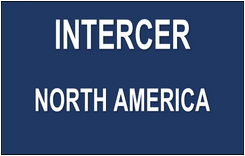IBTF 36001
IBTF 36001 Compliance Standard for Blockchain Investment Project Auditing and Certification
Introduction
The IBTF 36001 standard is an international compliance framework specifically designed for auditing and certifying blockchain technology investment projects. This normative standard provides a set of requirements and best practices that ensure transparency, security, and regulatory compliance for blockchain-based initiatives.
What is the IBTF 36001 Standard?
The IBTF 36001 is a comprehensive compliance framework developed by the International Blockchain Technology Forum (IBTF) that establishes requirements for:
Blockchain project evaluation
Technological and financial process auditing
Compliance certification
Continuous monitoring
This standard applies to all types of blockchain investment projects, including:
Cryptocurrency platforms
Decentralized finance (DeFi) solutions
Security tokens
Enterprise blockchain applications
Distributed infrastructures
IBTF 36001 Certification Process
Phase 1: Initial Assessment
Documentation submission: The project must submit its whitepaper, technical model, financial plan, and legal structure.
Feasibility analysis: Auditors evaluate the project's technical and economic robustness.
Regulatory review: Verification of compliance with applicable regulations in operational jurisdictions.
Phase 2: Technical Audit
Code review: Comprehensive analysis of smart contract and protocol source code.
Security testing: Vulnerability assessment and penetration testing.
Scalability verification: Network capacity analysis for growth handling.
Phase 3: Financial Audit
Economic model: Evaluation of business model sustainability.
Fund management: Review of capital custody and handling mechanisms.
Financial transparency: Verification of financial reports and reporting mechanisms.
Phase 4: Certification
Report issuance: Detailed document with findings and recommendations.
Conditional certification: Granted when partial compliance is achieved, with pending requirements.
Full certification: Awarded when all standard requirements are met.
Phase 5: Monitoring
Periodic audits: Quarterly or semi-annual reviews based on risk level.
Updates verification: Review of new versions or functionalities.
Renewal: Annual process to maintain certification.
Benefits for Investors
Risk Reduction
Independent evaluation: Certification provides objective assessment by qualified third parties.
Proven security: Certified projects have passed rigorous security tests.
Regulatory compliance: Minimizes risk of sanctions or legal issues.
Transparency
Verified information: All project aspects have been audited and confirmed.
Regular reports: Access to monitoring reports on project status.
Clear governance: Documented and validated decision-making structures.
Trust
Quality seal: IBTF 36001 certification is internationally recognized.
Verifiable track record: Certified projects have an audited history.
Asset protection: Validated fund custody and security mechanisms.
Benefits for Project Teams
Credibility
Differentiation: Distinction from non-certified projects.
Investor appeal: Higher probability of attracting institutional capital.
Continuous Improvement
Weakness identification: Audit process detects areas for improvement.
Optimization: Recommendations to strengthen the project.
Updates: Maintenance of international standards.
Market Access
Cross-border compliance: Facilitates expansion to multiple jurisdictions.
Regulator relations: Prepared documentation for approval processes.
Partner appeal: Easier establishment of strategic alliances.
Key Aspects of IBTF 36001 Standard
1. Governance and Compliance
Clear decision-making structures
Documented compliance policies
Conflict resolution mechanisms
2. Technological Security
Secure coding standards
Validated consensus protocols
Failure recovery mechanisms
3. Financial Transparency
Auditable financial reports
Fund distribution mechanisms
Clear tokenomics policies
4. Participant Protection
Implemented KYC/AML
Personal data protection
Claim and redress mechanisms
5. Sustainability
Viable economic model
Long-term development plan
Regulatory adaptation strategy
Application Cases
DeFi Projects
Smart contract auditing
Governance mechanism validation
Financial risk analysis
Token Offerings
Technical claims verification
Legal structure validation
Distribution model evaluation
Blockchain Infrastructure
Performance testing
Decentralization analysis
Interoperability assessment
Frequently Asked Questions
How long does the certification process take?
The time varies according to project complexity, but typically takes 8-12 weeks from initial request to certificate issuance.
What happens if a project fails the audit?
A detailed report with non-conformities is issued and a correction period is granted. If resolved, certification proceeds.
What distinguishes IBTF 36001 from other certifications?
Its holistic approach combining technical, financial, legal, and compliance aspects in a single blockchain-specific framework.
Conclusion
The IBTF 36001 standard represents the gold standard for blockchain investment project certification. For investors, it provides assurance they're participating in properly audited, compliant initiatives. For projects, it offers a structured framework to demonstrate robustness and transparency, facilitating access to capital and markets.
Adoption of this standard significantly contributes to the professionalization of the blockchain ecosystem, promoting responsible and sustainable practices that benefit all market participants.

SERVICES
BIG DATA ANALYSIS: is the technology used to analyze a huge amount of structured and unstructured data that is collected, organized and interpreted by software, transforming it into useful information for decision making and to generate ideas about market trends and behavior of its consumers and data of the company itself.
Structured data are those already organized in a way that makes it easier to view and read the information, while unstructured data are still loose data, such as texts, images and results of unorganized campaigns that do not have the same data profile.
DATA SCIENCE: Is the extraction of exploitable information from raw data. The data comes from all departments and activities of the company and its main objective is to identify trends, concepts, reasons, practices, connections and correlations in large data series, which is used to make decisions. Data Science allows you to make decisions based on data, instead of simple intuition.
DASHBOARD: is an information management tool that monitors, analyzes and visually displays key business/performance indicators and fundamental data to track the status of a company, a department, a campaign or a specific process.
It is a control panel that allows the management team to manage the company.
SMART AUDIT:
- Define the data and information that the company needs and why it wants it
- Define where the data and information that the company requires are
- Define the data and information structure/architecture of the company and its software and hardware
- Define the personnel that manages the data and their qualifications
- Define the use that personnel make of the data and where they obtain it from (origin and destination).
- Define location of data and servers / clouds
- Create a final report where you collect.
· Structure, location, data and information
· Classification of information and data (for company use. Critical, important, relevant).
· Determine the profile of the personnel who manages the data
· Determine the company's information/data management operations
· Determine the objective of using the data and what you want to do with it.
· Determine the next step, that is, if the company requires Big Data analysis, Data Science, Dashboard
DATA MINING:
The actual data mining task is the automatic or semi-automatic analysis of large amounts of data to extract interesting, hitherto unknown patterns, such as groups of data records (cluster analysis), unusual records (anomaly detection), and dependencies ( mining by association rules). This usually involves the use of database techniques such as spatial indexes.
These patterns can then be seen as a kind of summary of the input data, and can be used in further analysis or, for example, in machine learning and predictive analysis.
For example, the data mining step could identify various groups in the data, which can then be used to obtain more accurate prediction results by a decision support system. Neither data collection, data preparation, nor interpretation of results and information are part of the data mining stage, but they belong to the entire KDD process as additional steps?
THIS WEBSITE DOES NOT USE COOKIES OR ANY MEANS OF VISITOR CONTROL.
INTERCER NORTH AMERICA
880 Third Avenue, 5th Floor, New York, NY 10022
Office Hours: Monday through Friday. 9:00 am to 18:00 pm Eastern Standard Time (EST)

